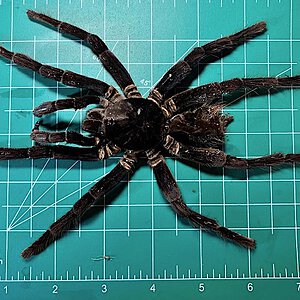- Joined
- Jan 22, 2022
- Messages
- 1,604
0.1 Pamphobeteus ultramarinus 3.75"


0.1 Pamphobeteus ultramarinus - 3.75" DLS
Young female posing nicely for us, starting to show some nice colors.
She's a bit of a...
She's a bit of a...











